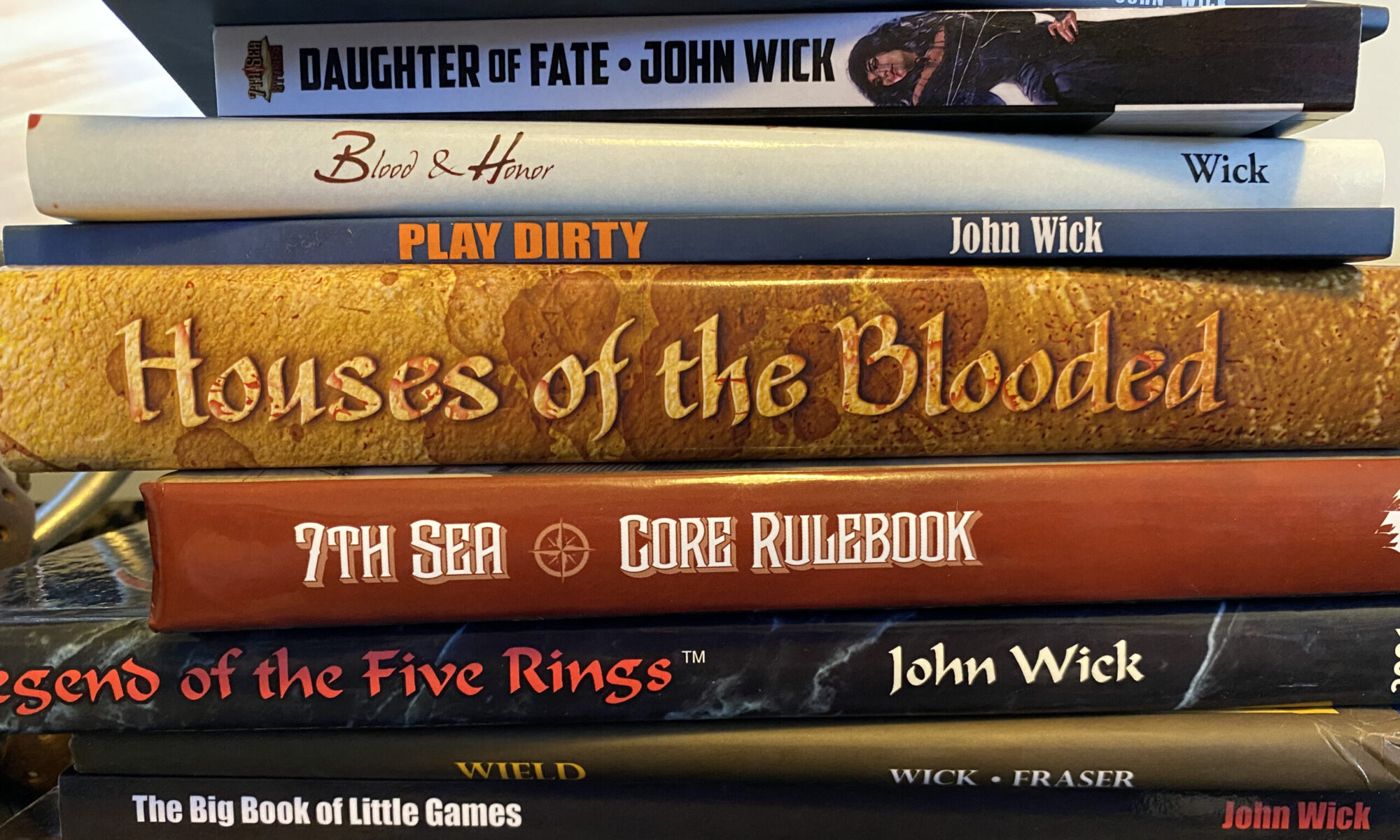When I was in high school, the biggest open secret was the sociology teacher’s quizzes. His quizzes were always multiple choice and everybody knew that if you answered “D” on his quizzes, you’d get a C. He designed them that way. All you had to do was answer “D” on each and every question and you’d pass his class. And so, in honor of that great tradition, I give you this pop quiz.
1) In the world’s most famous RPG, which mechanic represents insignificant injuries, dodging, glancing blows deflected off armor, and lucky misses?
a) hit points
b) armor class
c) difficulty class
d) both a) and b)
2) In the world’s most famous RPG, which mechanic represents taking a serious blow?
a) going to zero hit points
b) an opponent defeating your armor class
c) alignment
d) both a) and b)
3) In the world’s most famous RPG, what two mechanics are redundant systems?
a) hit points
b) armor class
c) speed factor
d) both a) and b)
When Dave Arneson designed the combat system for D&D, he modeled it after a naval combat game. (You can read the Mighty Mighty Arneson talking about it here.) From that perspective, it makes sense. You have to get through the armor of a ship to hurt it. But for one-on-one combat, it makes less sense. The systems become redundant.
Now, to be fair, we are talking about the very beginning of RPG design here. Dave, Gary, Dave Hargrave, Steve Perrin, the Troll Lord and the Great and Mighty Stafford were really just making all this up as they went. Shooting in the dark. We’re talking primitive technology here, but it was as innovative as the wheel. Others built on the foundation they laid, and technology has progressed. So, let’s do just that. Let’s build on what’s come before.
Injury
My buddy Matt Colville and I were arguing about hit points. Matt told me that he liked the fact that characters take no penalties for actions until they fall because, “When I need to be heroic, I can be.”
In other words, using a death spiral discourages heroic action. When things are at their worst, heroes are at their best. This is a literary conceit both Matt and I like very much. Death spiral systems discourage this kind of action in a roleplaying game. That’s why, in 7th Sea, there is no death spiral.
But death spirals do add a sense of dramatic tension to the game… and, dare I say it, “realism.” When you get hurt, it’s harder to act. It’s harder to keep going, to push through the pain. That’s a different kind of heroism. And that’s why, in L5R, there is a death spiral.
So, how do you do both? How to give a player the sense of “my character is really hurt” while allowing a character to be heroic when he needs to be? Well, first, you provide a mechanic (aspects) that allow him to call on bonus dice when he needs them. Okay, we’ve got that. But we also need a mechanic that warns the player, “Your character is really hurt. You need to protect yourself or something very bad is going to happen.”
Aspects.
When your character gets hurt, you gain an injury aspect. Or, just injury, if you like. The injury has a rank equal to the effect of the attacker’s roll. In other words, if someone attacks your character and his hit is worth 3 effect, that injury is rank 3.
For example, your character is in a duel and he gets hit with the business end of a sword. When the rolling is done, the total effect is 3, you write down the injury on your character sheet. (There’s a spot for injuries. Go look.) The attacker gets to define the injury. A cut across the face, a slice across the wrist, a jab to the belly, whatever.
Now, that injury can be invoked once per round by one opponent. Invoking that injury either gives him a number of bonus dice equal to the rank of the injury or subtracts a number of dice from your next risk. His choice. Remember: if you cannot roll dice for a risk, you automatically fail that risk.
Getting Dead
This leads us to how a character actually dies… which you don’t get today. It’s a different mechanic I’ll be dealing with tomorrow.
